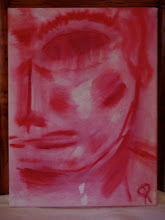
For many years, with the aid of Vinny, a gentle but persistent Siamese cat, I would wake up sometime between 5 a.m. and 6 a.m., roll out of bed and go for an hour-long walk (after feeding Vinny). I would leave before breakfast, and usually before coffee or tea — just lace my shoes, throw on coat and hat (depending on time of year), and go, jerked like a water skier behind my motorboat black lab, Mickey.
In the fields and off leash, Mickey’s concentration on tennis ball or stick was absolute, and I could relax (one morning I spotted a bear about fifty yards away but Mickey was, thankfully, oblivious, flipping a stick in the air with his nose and catching it). I was self-employed during these years, so even in the darkest days of winter, I could leave as late as seven o’clock and still have plenty of time to get ready to begin work at nine. The walks gave me ample time to appreciate my surroundings, get my bearings and contemplate the day.
I love the morning; no matter how much or how little sleep I have had, I am at my freshest, and there are few distractions during these early hours. It is solitary, quiet, and there are often spectacular sunrises that otherwise would go unnoticed. When I returned home I felt as if I had earned my breakfast, and the exercise and fresh air laid a solid foundation for whatever else befell me during the day. No matter how stressful work or life might get, I had already done something good for myself. I even got used to the cold during winter, shrugging it off, even embracing it, following Mickey’s example.
Now my rhythm has changed, and I walk late afternoons into evening. I still get up early, but spend the time writing, reading or doing household chores rather than walking. I now put on my walking shoes when I get home from my day job, around five, and I have come to crave the slow, sensual transition from sunset to twilight to stars.
I was a late convert to digital photography, for reasons that seem foolish now, if I even can recall them. Something about the added degree of difficulty associated with film — digital looked too easy (never mind that traditional photography is a facile, mechanical shorthand for drawing what we see). In any event, I held out for a long time, with a vague, if naïve, belief that it had something to do with artistic integrity.
Silly me. During these twilight walks, I can take photographs without a tripod or flash that would be impossible using film. A whole new world has opened before me, expanding, not compromising, my experience of taking pictures. It has been several years now since I have shot with film, and I am still a neophyte with digital. But these twilight walks encourage me to push the boundaries of what can be captured on camera.
Today I began my walk shooting tobacco barns in slanted, late-afternoon light, then gingerly crossed a narrow slat bridge resting on the surface of the swollen Mill River. I arrived at the Connecticut when its expanse was a shifting blend of blues and apricot. The sun had disappeared; it was twilight, but I kept shooting. The light was so subtle and rich that it felt like time was suspended, or that it filled the air rather than simply passed through it. The light lacked a specific value, but infused everything in sight with a dense, yet transparent, hue.
The camera flash had still not gone off and I had nothing to lose (more advantages of digital—low light, low cost and instant access), so I tried the moon next, a thin crescent pointing skyward, poised over the silhouette of a tobacco barn that jutted above an orange horizon seeping above the tree line. The pictures might not come out, but who cares? They might communicate the moment, if not the literal image. When we walk, after all, things look blurred at times as our head moves in opposition to our feet at varying speeds on uneven surfaces. So what exactly is literal, anyway?
No matter which way I walk to the river, the return from my walk brings me to town, where pedestrian electric light contrasts with moon and stars: the ghost-like reflections of television sets undulating on walls; the steady red eye beaming from a small metal box affixed to a telephone pole; warm, incandescent lights of kitchens and dining rooms as people sit down to eat. At this hour, I am straddling worlds — the semi-wilderness from which I return, and the human habitation at the end of my journey. I feel kinship with both; a double dose of longing, and belonging.
Once back on Maple Street, I heard a car slow down and stop behind me. It seemed an odd place to pull over, between driveways, but I just kept walking, not bothering to look around.
A minute later, the car went slowly past me, and once again came to a stop by the side of the road. Perhaps the driver was lost and, having searched a map unsuccessfully a moment ago, was going to ask me for directions. Or perhaps, I thought, remembering being hassled at night in small towns sometimes as a teenager, someone was going to give me hard time. Either way, I didn’t feel much like talking.
The door opened, and the driver slowly got out as I neared the car. But instead of looking toward me, he turned and faced the direction I was going, took something from his coat pocket, and pointed it at the sky.
It was a digital camera. He, too, was still shooting, aiming to capture the sliver of a moon in the deepening indigo evening. I opened my mouth to offer encouragement, but closed it before speaking. A picture says a thousand words.

No comments:
Post a Comment